Barrett .50 Caliber Sniper Rifle Replacement Sought By SOCOM
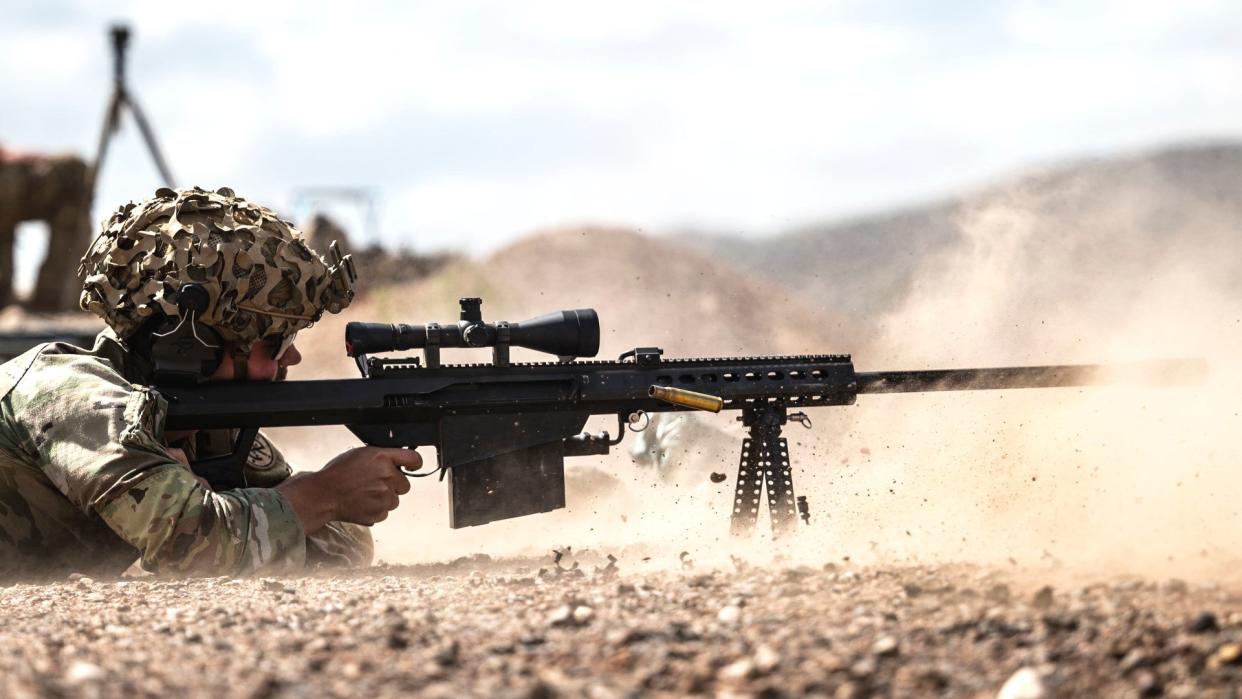
U.S. Special Operations Command has laid out requirements for a new bolt-action Extreme Long Range Sniper Rifle that could replace its existing .50 caliber precision rifles. American special operators currently use variants of the iconic Barrett semi-automatic .50 caliber rifle and the less well-known bolt-action McMillan Mk 15 in the same caliber.
Special Operations Command's (SOCOM) Special Operations Forces Acquisition, Technology, and Logistics Center (SOF AT&L) first put out its sources sought notice for the Extreme Long Range Sniper Rifle (ELR-SR) in December. An updated version with very minor changes was posted this week. The contracting announcement, which is currently just seeking information on possible new rifles from prospective vendors, includes a number of core requirements.
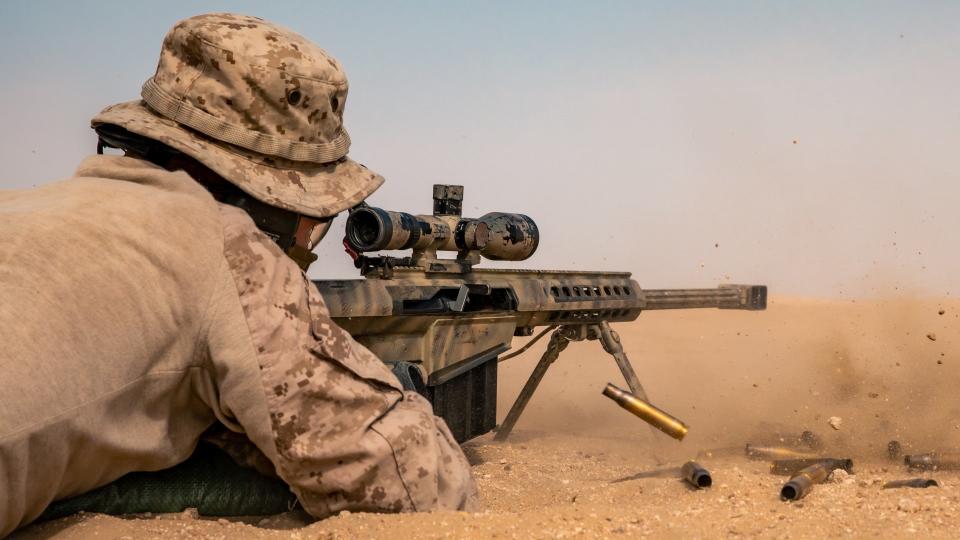
"The ELR-SR system is intended to replace legacy M107 and MK15 for anti-personnel and anti materiel targets," the notice explains. "The ELR-SR weapon system will have a precision fire capability of 2500m [approximately 2,734 yards]."
M107 is the current designation for the latest variants of the semi-automatic Barrett .50 caliber rifle currently in U.S. military service. Barrett Firearms developed the first version of this rifle in the 1980s, marketing it as the M82, a designation that the U.S. military subsequently also used. Various improvements were made to the core design over the years, but its general look has remained largely unchanged. These guns have become a gold standard for very large caliber long-range precision rifles for special operations forces and other military and security services around the world, as well as an absolute fixture in popular culture.
https://www.youtube.com/watch?v=rviQWy48B_w https://www.youtube.com/watch?v=tzBTS6t60j0
The M107 designation comes from a U.S. Army effort to acquire a bolt-action .50 caliber rifle, the Barrett M95. The service subsequently abandoned that plan and acquired improved semi-automatic M82A1M rifles instead, applying the M107 designation to them.
Mk 15 is the U.S. Navy's designation for bolt-action McMillan Firearms Tac-50 rifles, which were acquired primarily for SEAL snipers. Like the Barrett M82/M107, the baseline Tac-50-based design for the SEALs, or Mk 15 Mod 0, also dates back to the 1980s. The U.S. special operations community has since acquired improved examples of this rifle, known as Mk 15 Mod 1s, which are visibly distinct from their predecessors thanks to a new Cadex Dual Strike chassis system.
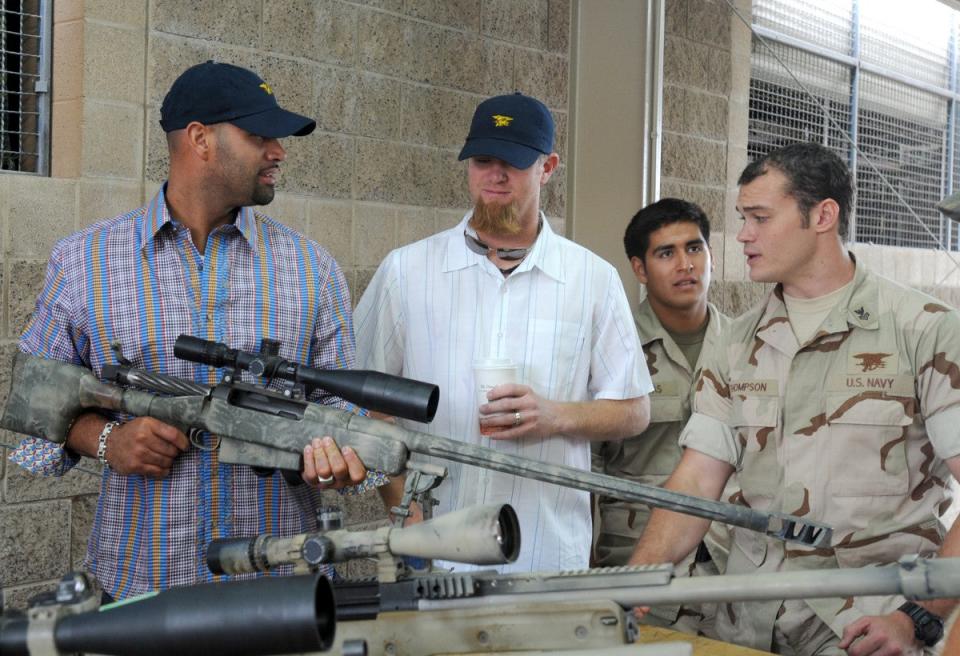
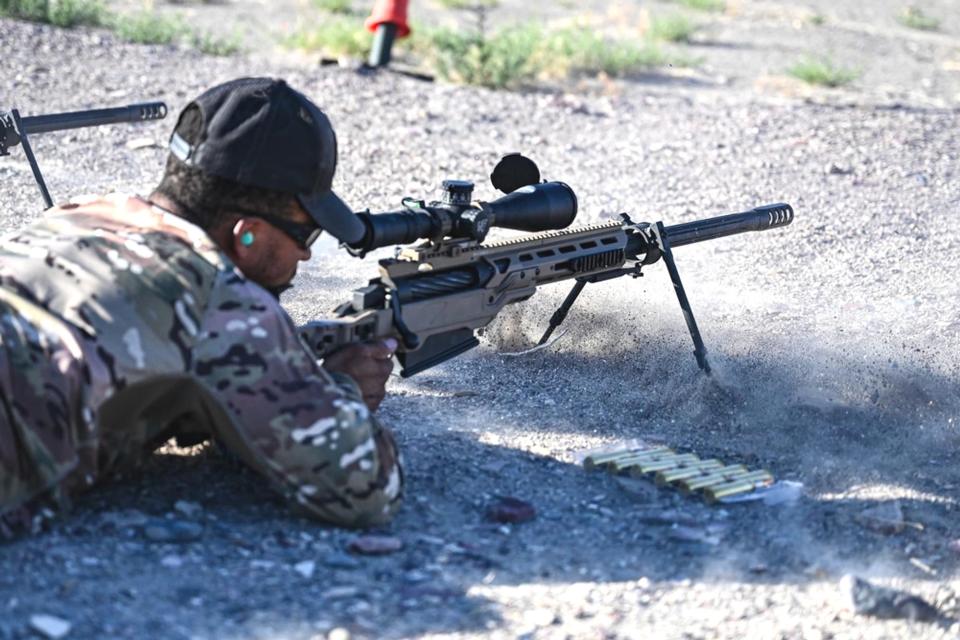
McMillan Tac-50 rifles are also in service elsewhere around the world, including with other special operations units. In 2017, Canadian media reported that a sniper with that country's elite Joint Task Force 2 (JTF 2) special operations unit had set a new record for the longest confirmed kill when they took out an ISIS terrorist in Iraq at a distance of some two miles using a C15 rifle (the Canadian armed forces designation for the Tac-50).
SOF AT&L expressly says it is now interested in a new bolt-action rifle with a maximum overall length of no more than 56 inches, and that is hopefully 50 inches long or shorter. The threshold for the rifle's maximum weight with an empty magazine is 22 pounds, but the objective target is no more than 18 pounds.
Even a 56-inch-long, 22-pound rifle would be shorter and lighter than the M107 (57 inches long and some 28 and a half pounds) and the Mk 15 (57 inches long and around 27 pounds). The desired 2,500-meter effective range for the ELR-SR is also greater than that of the M107 or Mk 15.
The ELR-SR should have a peak recoil energy of 25 pounds or less. SOCOM's goal would be to acquire a rifle that reduces felt recoil to as low a point as possible. Existing semi-automatic Barrett M82/M107 rifles notably have a recoiling barrel system to help reduce recoil.
https://www.youtube.com/watch?v=RzUAQoyvrOw
A number of other baseline accuracy and other performance requirements for the ELR-SR, reproduced below, are included in the contracting notice.
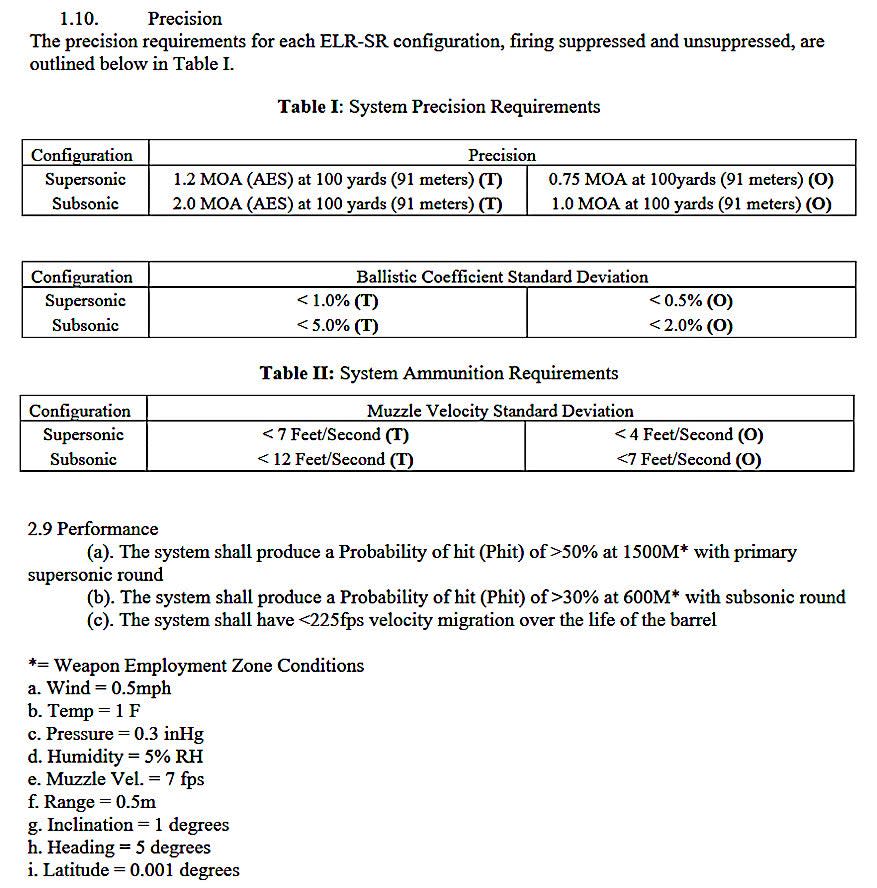
Various accessories are included in the requirements for the complete ELR-SR "system," such as a "sound suppressor, ballistic computer, operator manual, cleaning kit, tool kit, bipod, and Transportation Safety Administration (TSA) approved locking hard carrying case." The suppressor, which can't be more than eight and a half inches long, needs to be able to reduce the rifle's report to 140 decibels or less.
SOCOM says it would want the ELR-SR to have a mix of U.S. military standard Picatinny and Magpul M-LOK rails onto which various accessories, such as optics and aiming devices, could be attached.
As to the actual caliber of the rifle, the ELR-SR requirements leave that open-ended and there is a demand for a modular design that allows for swapping between different types of ammunition. "If the primary system caliber is not a current DOD-approved munition, [the proposed] system shall be capable of transitioning to a current .300 Norma Magnum DOD-approved munition with a quick-
change kit," the contracting notice adds.
The M82/M107 and Mk 15 rifles that the ELR-SR could replace are both chambered to fire .50 caliber Browning Machine Gun cartridge (also sometimes referred to as 12.7x99mm NATO). This large caliber has long allowed for specialized loadings, including ones with bullets that feature incendiary and/or high-explosive elements.
The armor-piercing-incendiary-high-explosive explosive Mk 211 .50 caliber cartridge, commonly known as the Raufoss round after the Norwegian company (Nammo Raufoss AS) that developed it, is a prime example of one of these multi-purpose rounds. Ammunition like this is particularly useful in the anti-materiel role, where snipers are tasked with trying to destroy or at least disrupt targets like fuel and ammunition storage dumps, radar dishes, or even light vehicles.
https://www.youtube.com/watch?v=XjTsRju6W-Y
The ELR-SR requirements leave open the possibility of SOCOM acquiring a new .50 caliber bolt-action rifle, such as a variant or derivative of Barrett's M95 or an improved iteration of McMillan's Tac-50.
There are other large-caliber options on the market already. One of the best-known of these is the CheyTac Intervention series, variants of which are offered in that company's propriety .408 and .375 CheyTac calibers. CheyTac rifles have been heavily popularized in movies and video games, but are also in real-world service with special operations units around the world, including the British Special Air Service (SAS). Media reports in 2017 said that an SAS sniper had killed an ISIS terrorist in Iraq a mile and a half away using a CheyTac M200 in an unspecified caliber.
https://www.youtube.com/watch?v=-BG6inAeEZ0
SOCOM could determine that a smaller caliber is sufficient, as well. The ELR-SR requirements, as they exist now, do note a desire for the rifles to have the option of being readily converted to rifle .300 Norma Magnum. Improved accuracy at extreme ranges and other ammunition advancements could make up for a smaller overall projectile, even against certain materiel targets.
It is worth noting here that the U.S. Army announced its intention to phase out M82/M107 rifles (as well as its bolt-action M2010s firing .300 Winchester Magnum) in use with non-special operations units with a new bolt-action type, the Barrett Mk 22, chambered in .338 Norma Magnum back in 2020. The Marine Corps is buying Mk 22 rifles, too, but so far only to supplant its bolt-action Mk 13s, also chambered in .300 Winchester Magnum.
Mk 22s are also in service in the U.S. special operations community. Barrett offers a derivative of its Multi-Role Adaptive Design (MRAD) sniper rifle, of which the Mk 22 is a variant, chambered in the larger .416 Barrett cartridge. MRAD is itself a modular design intended to be capable of being readily reconfigured to fire several different cartridges.
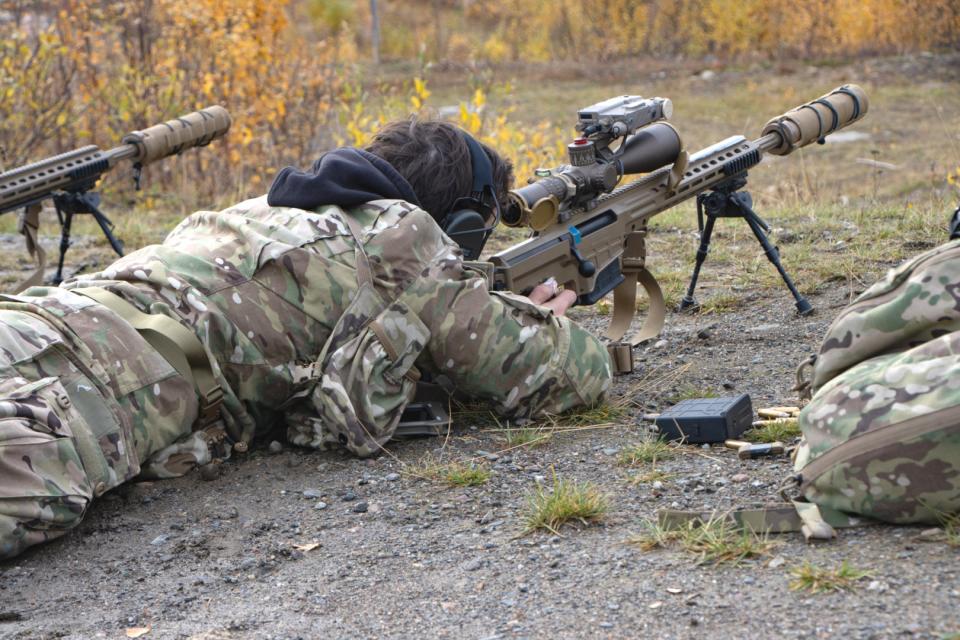
It is also important to remember that issuing sources sought notice is one of the earliest phases in the U.S. military's contracting process. SOCOM's ELR-SR requirements could change significantly as time goes on, just like the Army's plans for the M107. The decision could be made to shelve or abandon the effort altogether.
Still, SOCOM's interest in a more modern replacement for the M82/M107 and Mk 15 is well in line with its broader push in recent years to acquire a host of new small arms. This includes programs to acquire new smaller-caliber precision rifles, light and medium machine guns, and pint-sized rifle-caliber personal defense weapons.
If SOCOM does pursue a new rifle to meet its ELR-SR requirements, it could represent a significant shift in the U.S. special operations community's precision rifle arsenal. It would also be another major move away from the iconic M82/M107, as well as the Mk 15, on the part of the U.S. military.
Contact the author: joe@thedrive.com

